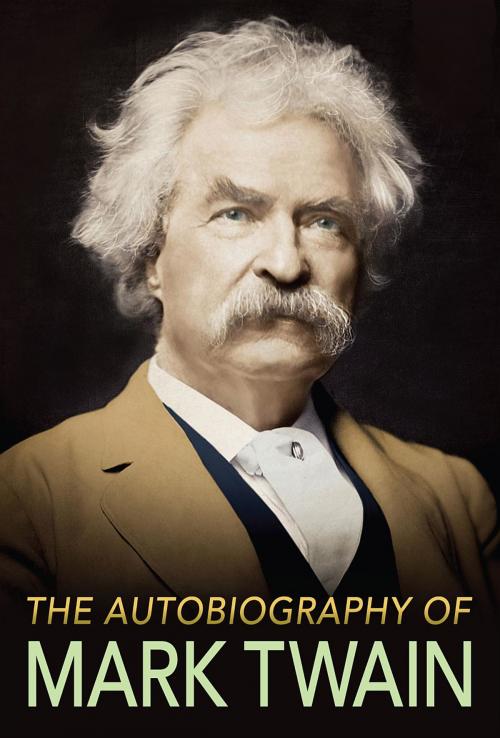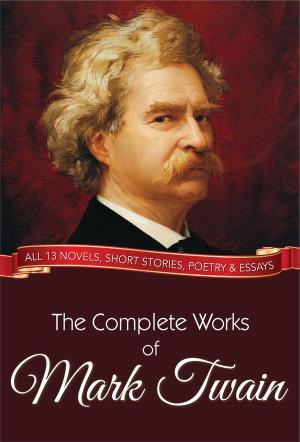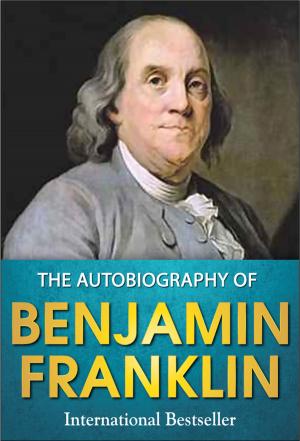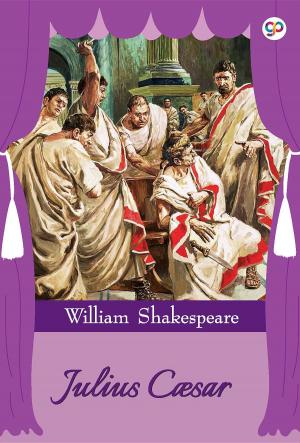The Autobiography of Mark Twain
The Complete and Authoritative Edition
Biography & Memoir, Literary, Nonfiction, History, Americas, United States| Author: | Mark Twain, GP Editors | ISBN: | 9788180320859 |
| Publisher: | GENERAL PRESS | Publication: | April 26, 2017 |
| Imprint: | GENERAL PRESS | Language: | English |
| Author: | Mark Twain, GP Editors |
| ISBN: | 9788180320859 |
| Publisher: | GENERAL PRESS |
| Publication: | April 26, 2017 |
| Imprint: | GENERAL PRESS |
| Language: | English |
In his autobiography Mark Twain tells his story in his own way, freely expressing his joys and sorrows, his affections and hatreds, his rages and reverence—ending, as always, tongue-in-cheek: "Now, then, that is the tale. Some of it is true."
More than the story of a literary career, this memoir is anchored in the writer’s relation to his family—what they meant to him as a husband, father, and artist. It also brims with many of Twain’s best comic anecdotes about his rambunctious boyhood in Hannibal, his misadventures in the Nevada territory, his notorious Whittier birthday speech, his travels abroad, and more.
Twain published twenty-five chapters from his autobiography in the 'North American Review' in 1906 and 1907. "I intend that this autobiography... shall be read and admired a good many centuries because of its form and method—form and method whereby the past and the present are constantly brought face to face, resulting in contrasts which newly fire up the interest all along, like contact of flint with steel."
ABOUT THE AUTHOR:
Mark Twain (Originally Samuel Langhorne Clemens), was an American author and humorist. He is noted for his novels 'Adventures of Huckleberry Finn' (1885), and 'The Adventures of Tom Sawyer' (1876).
Twain grew up in Hannibal, Missouri, which would later provide the setting for Huckleberry Finn and Tom Sawyer. He apprenticed with a printer. He also worked as a typesetter and contributed articles to his older brother Orion's newspaper. After toiling as a printer in various cities, he became a master riverboat pilot on the Mississippi River, before heading west to join Orion. He was a failure at gold mining, so he next turned to journalism. While a reporter, he wrote a humorous story, 'The Celebrated Jumping Frog of Calaveras County', which proved to be very popular and brought him nationwide attention. His travelogues were also well-received.
He achieved great success as a writer and public speaker. His wit and satire earned praise from critics and peers, and he was a friend to presidents, artists, industrialists, and European royalty.
However, he lacked financial acumen. Though he made a great deal of money from his writings and lectures, he squandered it on various ventures, in particular the Paige Compositor, and was forced to declare bankruptcy. With the help of Henry Huttleston Rogers, however, he eventually overcame his financial troubles. Twain worked hard to ensure that all of his creditors were paid in full, even though his bankruptcy had relieved him of the legal responsibility.
Twain died on April 21, 1910, having survived his children Langdon, Susan and Jean as well as his wife, Olivia. In his lifetime, he became a distinguished member of the literati, and was honored by Yale, the University of Missouri, and Oxford with literary degrees.
In his autobiography Mark Twain tells his story in his own way, freely expressing his joys and sorrows, his affections and hatreds, his rages and reverence—ending, as always, tongue-in-cheek: "Now, then, that is the tale. Some of it is true."
More than the story of a literary career, this memoir is anchored in the writer’s relation to his family—what they meant to him as a husband, father, and artist. It also brims with many of Twain’s best comic anecdotes about his rambunctious boyhood in Hannibal, his misadventures in the Nevada territory, his notorious Whittier birthday speech, his travels abroad, and more.
Twain published twenty-five chapters from his autobiography in the 'North American Review' in 1906 and 1907. "I intend that this autobiography... shall be read and admired a good many centuries because of its form and method—form and method whereby the past and the present are constantly brought face to face, resulting in contrasts which newly fire up the interest all along, like contact of flint with steel."
ABOUT THE AUTHOR:
Mark Twain (Originally Samuel Langhorne Clemens), was an American author and humorist. He is noted for his novels 'Adventures of Huckleberry Finn' (1885), and 'The Adventures of Tom Sawyer' (1876).
Twain grew up in Hannibal, Missouri, which would later provide the setting for Huckleberry Finn and Tom Sawyer. He apprenticed with a printer. He also worked as a typesetter and contributed articles to his older brother Orion's newspaper. After toiling as a printer in various cities, he became a master riverboat pilot on the Mississippi River, before heading west to join Orion. He was a failure at gold mining, so he next turned to journalism. While a reporter, he wrote a humorous story, 'The Celebrated Jumping Frog of Calaveras County', which proved to be very popular and brought him nationwide attention. His travelogues were also well-received.
He achieved great success as a writer and public speaker. His wit and satire earned praise from critics and peers, and he was a friend to presidents, artists, industrialists, and European royalty.
However, he lacked financial acumen. Though he made a great deal of money from his writings and lectures, he squandered it on various ventures, in particular the Paige Compositor, and was forced to declare bankruptcy. With the help of Henry Huttleston Rogers, however, he eventually overcame his financial troubles. Twain worked hard to ensure that all of his creditors were paid in full, even though his bankruptcy had relieved him of the legal responsibility.
Twain died on April 21, 1910, having survived his children Langdon, Susan and Jean as well as his wife, Olivia. In his lifetime, he became a distinguished member of the literati, and was honored by Yale, the University of Missouri, and Oxford with literary degrees.















